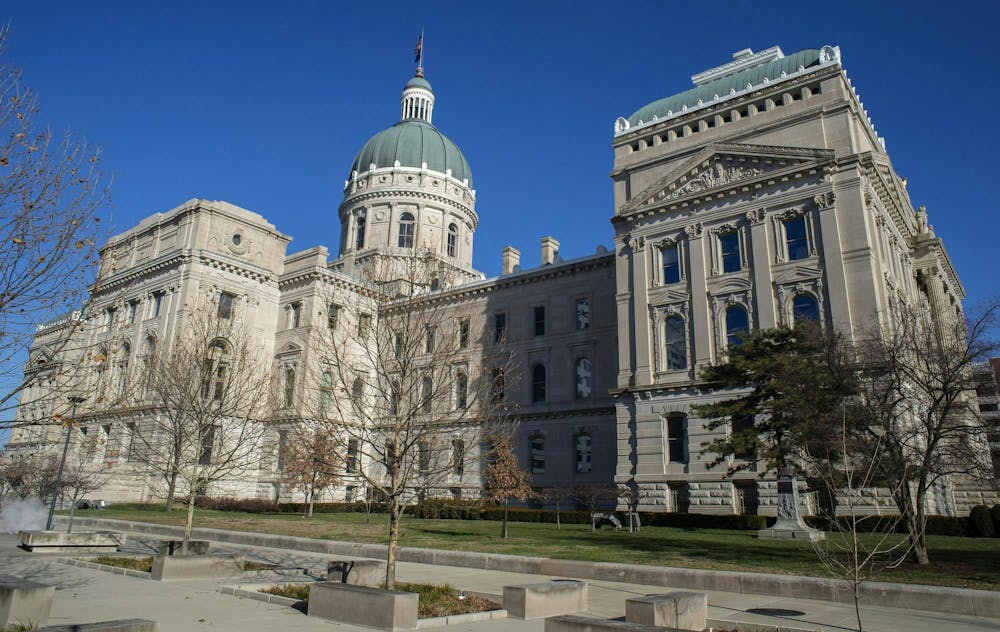Editor's note: All opinions, columns and letters reflect the views of the individual writer and not necessarily those of the IDS or its staffers.
If the proposed state budget passes, Indiana public schools anticipate losing $371 million in funding over the next three years. Although this is a reduction from the $1.9 billion loss projected before amendments, the impact remains “extremely negative,” Michael Beresford, superintendent of Carmel Clay Schools in Carmel, Indiana, said to Indiana Public Media.
“It is bad policy, especially in light of the teacher and staff shortages we continue to battle across Indiana,” Beresford said.
In this legislative session, the budget, Senate Bill 1, is one of several proposed bills targeting public education. Together, these bills reflect the efficiency-driven approach to government championed by Gov. Mike Braun. In his State of the State address, he said, “All governments need to do more with less.” However, to serve students better, Indiana must adopt a more conservative approach to government — one that protects and strengthens public education.
In a previous column discussing efforts to streamline the federal government, I argued efficiency often translates to deregulation and dismantling. Thus, a seemingly efficient approach can serve as a Trojan horse for a regressive one that backtracks investments in community institutions.
“School corporations augment what they get from the state through local referendums,” Chad Lochmiller, a professor at the IU School of Education, said in an interview. “These are additional property taxes to provide specific educational programs.”
But Senate Bill 1 would limit how much local governments can raise property taxes, and over three years, Monroe County Community School Corporation could lose $8,329,650 in funding.
In 2023, the Indiana Daily Student reported that Monroe County Community schools used funds raised from property taxes to cover preschool costs, tests, textbooks and technology for lower-income students and families. In 2022, this money contributed to higher teacher and staff wages.
Eliminating schools’ ability to augment their revenue will cause a “Chesterton’s fence” scenario. This is a scenario — named for conservative thinker G.K. Chesterton — in which one discovers why a structure was built only after they’ve destroyed it. For example, a farmer realizes a fence's purpose only after it’s been destroyed, and wolves invade his pastures. In the past weeks, this is why federal agencies have been rehiring employees whose positions were eliminated. National security concerns, like wolves (and no one to manage nuclear weapons), reared their heads.
Similarly, Indiana will likely need to reinvest in public education in the coming years if it divests $371 million now. After Kansas slashed state revenue by $700 million in 2012, only part of which contributed to education, state legislators repealed the cuts by 2017.
Like Kansas schools a decade ago, schools across Indiana, including in Bloomington, will have to decide which limbs they can amputate.
“When we cut half a dozen coaching positions, all of the booster clubs came to us and said, ‘We'll raise the money to fund that position,’ and they did,” Martin Stressman, who was a school district superintendent in Kansas at the time, said in an interview with NPR. “But nobody lines up when you reduce three custodial positions.”
Already cash-strapped schools that supplement teachers’ salaries through property taxes will face an exaggerated teacher shortage and greater position turnover.
“If you have teacher salaries in a local school corporation that are partially raised because of referendum dollars, which is the case in many corporations in the state, those salaries or positions have to be reduced,” Lochmiller said.
In his State of the State address, Braun recognized the impact of funding cuts on a local level and promised to “continue to have important discussions with local governments about how to protect vital services like police, fire and schools.”
Evidently, these conversations lowered cuts to education from $1.9 billion to $371 million, but conversations must continue. Even without this bill, Monroe County Community schools eliminated staff for “resource optimization” last year. The result of doing more with less is doing less with less. Although effectiveness is the end goal of efficiency, the best effects for students and educators would come from an approach that conserves investment in public schools.
This approach would prioritize stability over streamlining, and stability for students and teachers relies on stability of funding. To avoid worsening Indiana’s teacher shortage and turnover, state legislators can maintain investments in public education. In this way, teachers can afford to remain in the same district over time, students can attend schools without fear of their shutting down and parents can raise children in communities with a steady approach to education.
A conservative approach is one grounded in an attitude of conservation, which includes upkeep.
“If you leave a white post alone, it will soon be a black post,” Chesterton said. “If you particularly want it to be white, you must be always painting it again.”
This represents the conservative approach that Indiana needs to take — one that maintains our public school system in the full sense of maintenance. But that requires continually investing in the paint.
Eric Cannon is a freshman studying philosophy and political science and currently serves as a member of IU Student Government.






